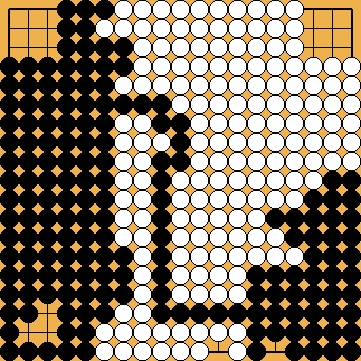The Crosscut Sequence
|
|
|
(Referenced by
|
|
(B |
|
(B |
The Semeai Top Right Corner vs. Left Side
|
|
|
|
|
|
|
We ask for your kind understanding that we have not been able to adjust the structure of our website according to the new correct order of moves, but only added a corresponding note in the affected variations. |
|
|
The Endgame on the Left Side
|
The large fight on the board, between Black's eyeless group in the top right, and White's group on the left side, which cannot get more than one eye, is already decided. So it seems technically correct to continue with the endgame on the left side of the board, and to finish the Main Semeai later. This is based on a suggestion of Professor Prof. Jeong SooHyun 9p ( |
|
|
There are slight differences in the evaluation of a few moves - compared to our solution - when the endgame on the left side is played last, and White continues with capturing Black's nakade with a move at |
|
We ask for your kind understanding that we have not been able to adjust the structure of our website according to the new correct order of moves, but only added a corresponding note in the affected variations. |
|
We ask for your kind understanding that we have not been able to adjust the structure of our website according to the new correct order of moves, but only added a corresponding note in the affected variations. |
|
|
|
|
|
|
The Semeai Top Right Corner
vs. Left Side Again
|
|
|
|
|
|
|
|
|
Despite the fact that Black cannot successfully fight, and win, this ko (please refer to the appropriate variation of the professional solution; White does not profit from further reducing Black's potential territory on the left side, starting with a move at |
|
Therefore, it is not necessary for White to play her own kikashi at |
|
|
|
|
|
|
|
|
|
(Referenced by
Black is obliged to take a liberty inside White's eye - any other move leads to the Punishment Semeai, and is a disaster for Black! This move is being played because it takes a liberty, and not because it is an eye-stealing point as coincidently also is in the classical nakade-filling sequence. |
White's Final Decision
|
However, fate has not been kind to her. Her groups on the left edge and in the hanezeki at bottom right are now one stone too large; on the other hand, Black's tail of the hanezeki has one stone too few. Whatever White decides, victory will be denied her. White chooses the main variation, which we call the "Semeai Variation". It is worse for her to capture with |
|
|
|
|
|
|
|
|
The Final Result
|
Black wins by three points. This result is fairly stable with respect to small changes of moves, as well as to the order of moves, and is the standard result for the Semeai Variation with the double throw-in. Igo Hatsuyōron is a Japanese classic, so it is natural to use Japanese territory scoring throughout this book. Please also note that the Igo Hatsuyōron was written in an era, in which Komi was not yet used. |
 198
198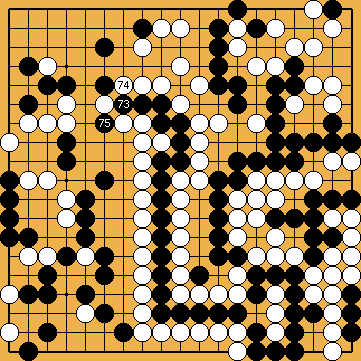
 :
: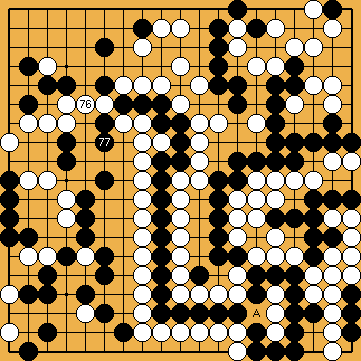
 : (A
: (A  519
519 . The hanezeki will be dissolved, but White will be unable to capture one of Black's group on the left side, to get compensation for her loss on the right side.
. The hanezeki will be dissolved, but White will be unable to capture one of Black's group on the left side, to get compensation for her loss on the right side.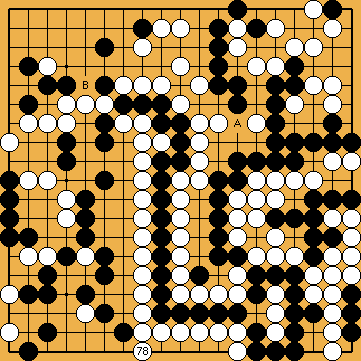
 : (A
: (A  - ensure that White's group can only get one eye, so killing White's entire left side.
- ensure that White's group can only get one eye, so killing White's entire left side. first, threatening Black's top left corner. She will destroy several points of Black's territory, but not gain enough to turn the tables.
first, threatening Black's top left corner. She will destroy several points of Black's territory, but not gain enough to turn the tables.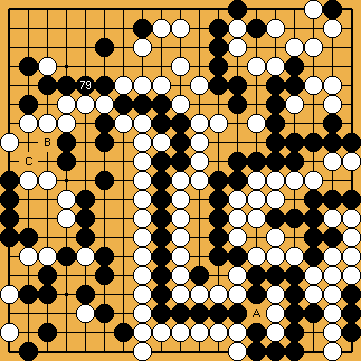
 : (A
: (A  . As already shown with the variation for
. As already shown with the variation for  (
( .
.

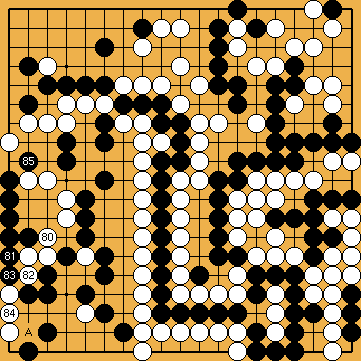
 : (A
: (A 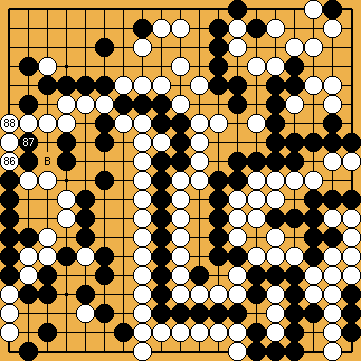
 : (B
: (B 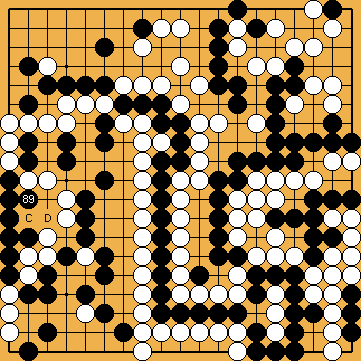
 : (C
: (C  . White's group on the left side will live in seki. Thus White does not need to capture the hanezeki's tail, and she will win the game.
. White's group on the left side will live in seki. Thus White does not need to capture the hanezeki's tail, and she will win the game.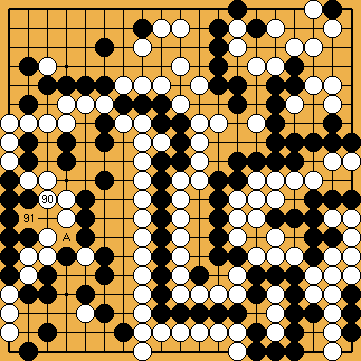

 : (91
: (91 
 A
A 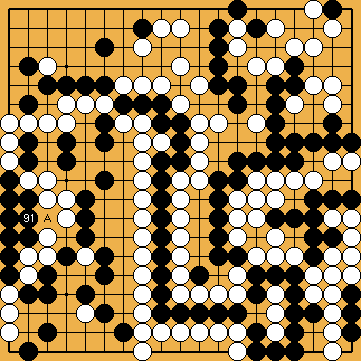
 :
: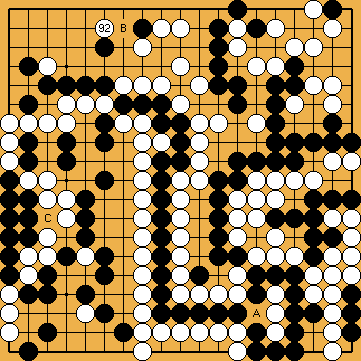
 : (B
: (B  .
.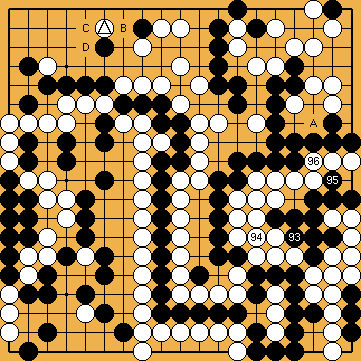
 : (B
: (B  , and especially
, and especially  ,
,  no later than now, immediately after Yamada Shinji's tsuke in the top left. If he does without the latter exchange, White will start the semeai in the upper right with a move at
no later than now, immediately after Yamada Shinji's tsuke in the top left. If he does without the latter exchange, White will start the semeai in the upper right with a move at  , instead of
, instead of  ), and gain two points. To do without the atari of
), and gain two points. To do without the atari of 
 ; chosen by us for no specific reason) is the wrong timing.
; chosen by us for no specific reason) is the wrong timing.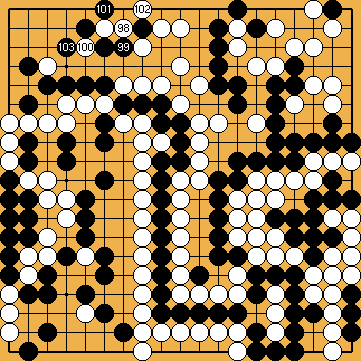
 : (
: ( immediately.
immediately.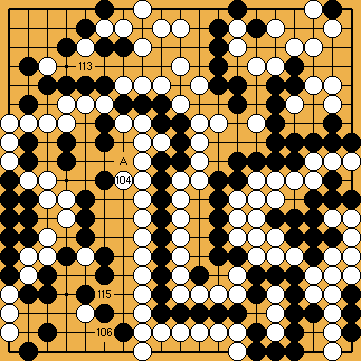
 : (A
: (A  -
-  , or after
, or after  .
.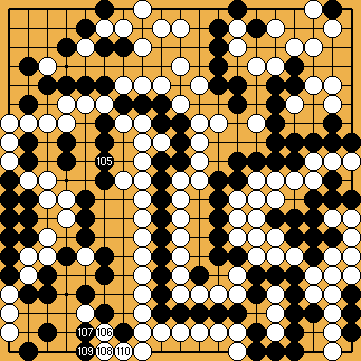
 : (110
: (110  , instead.
, instead.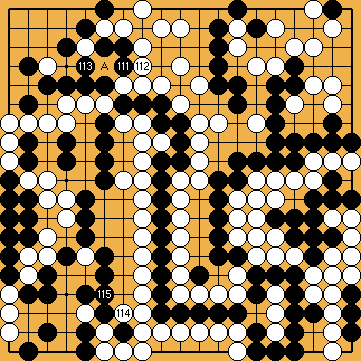
 : (114
: (114  now. White will give atari in the top left corner, at
now. White will give atari in the top left corner, at 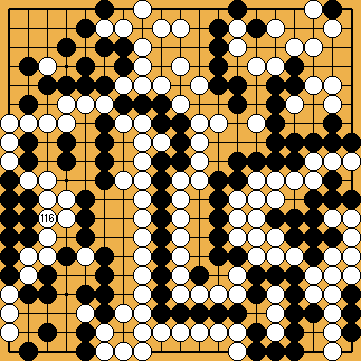
 :
: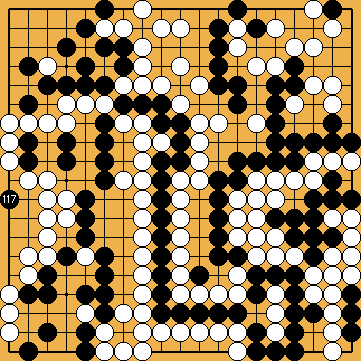
 : (120
: (120 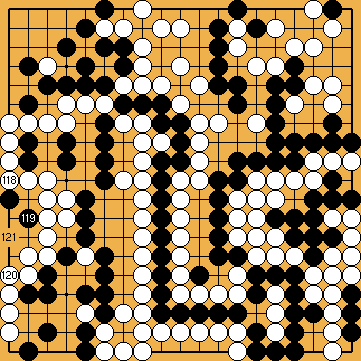
 :
: , instead. With
, instead. With  ,
,  , it results a change in the order of moves.
, it results a change in the order of moves.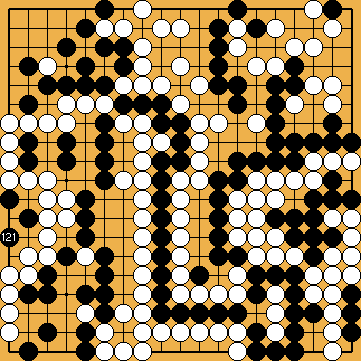
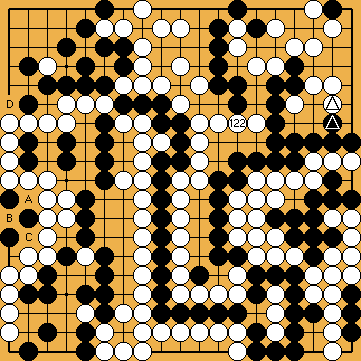
 : (D
: (D  /
/  , instead.
, instead.
 :
: , just now. However, if he wanted to gain an additional liberty for his large group, he would have to accept losing points (when White captures at
, just now. However, if he wanted to gain an additional liberty for his large group, he would have to accept losing points (when White captures at  , later). Otherwise, this will result in a change of the order of moves only.
, later). Otherwise, this will result in a change of the order of moves only. earlier, to steal Black's kikashi its impact.
earlier, to steal Black's kikashi its impact.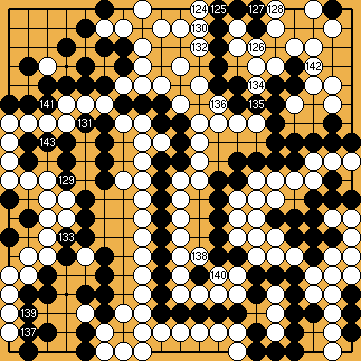
 with this move. Otherwise, the order of moves will matter here (please refer to
with this move. Otherwise, the order of moves will matter here (please refer to 
 : (146
: (146 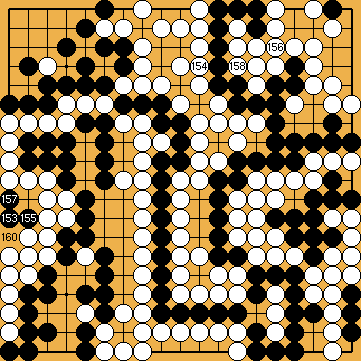
 :
: (
(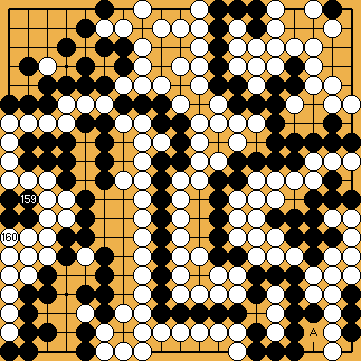
 : (A
: (A 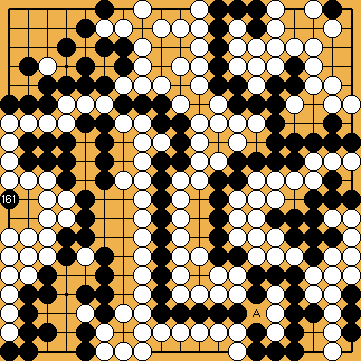
 : (A
: (A 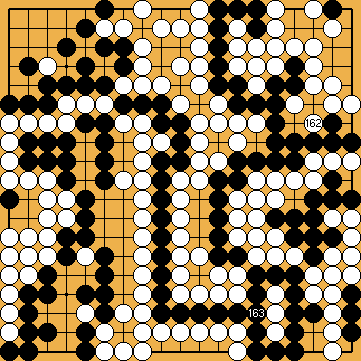
 in the centre (= "Capture Variation"), instead.
in the centre (= "Capture Variation"), instead.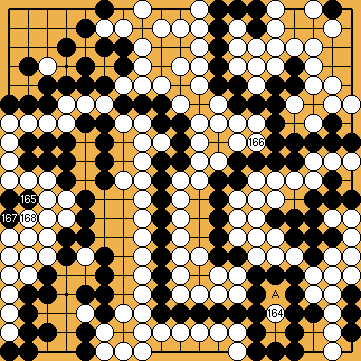
 : (A
: (A 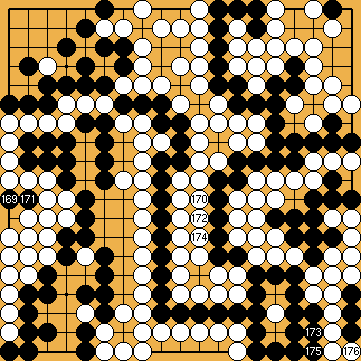
 :
: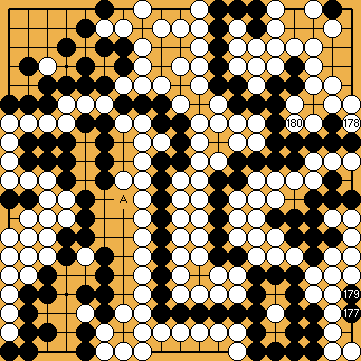
 : (A
: (A 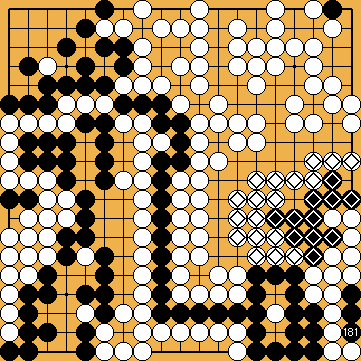
 :
: -/
-/ -groups (compared to the classic version of a hanezeki, where the
-groups (compared to the classic version of a hanezeki, where the 